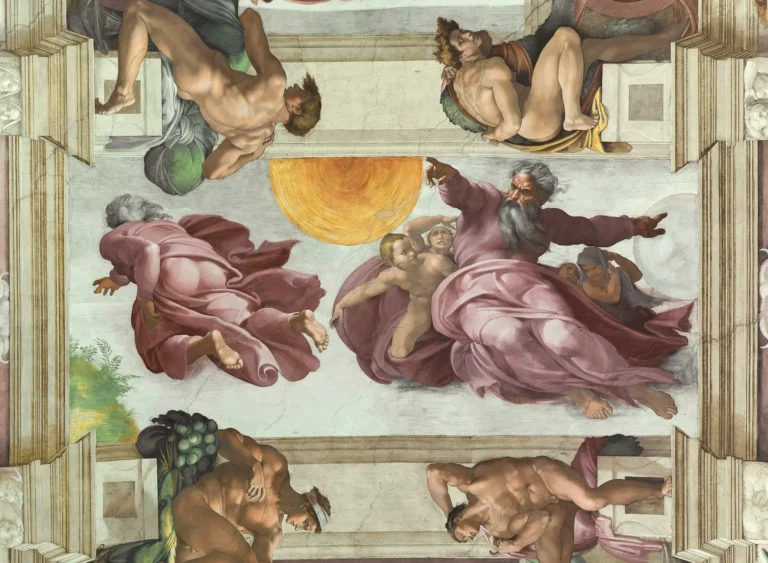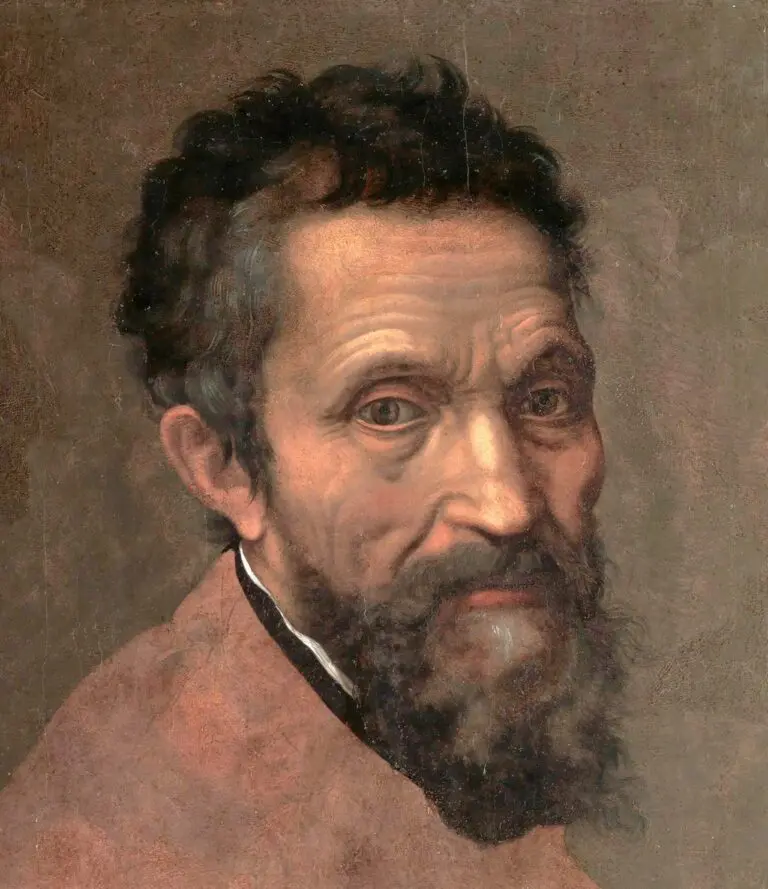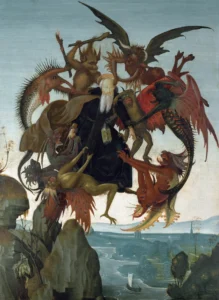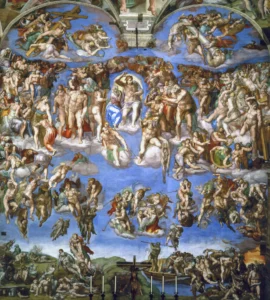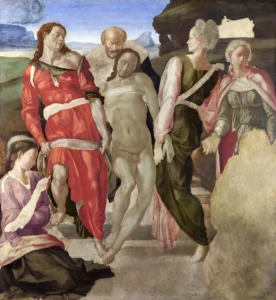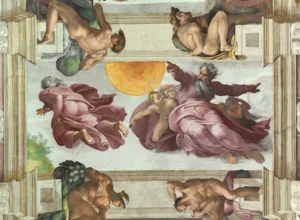The Creation of the Sun and the Moon (1508-1512)
Painted between 1508 and 1512, The Creation of the Sun and the Moon is a key episode in Michelangelo's frescos adorning the Sistine Chapel ceiling. Commissioned by Pope Julius II, this magnificent artwork illustrates God's powerful act of creating the sun and the moon, rendering a captivating visual narrative that separates day from night. The artist's innovative techniques and dynamic use of figures highlight his exceptional skills, contributing to the piece's place in the pantheon of great Renaissance art.
1508 - 1512
About the Artwork
The Sistine Chapel was commissioned by Pope Julius II to transform the space into a reflection of the divine, making it an enduring symbol of the Renaissance. Facing reluctance to engage in fresco painting, Michelangelo was ultimately convinced to take on this monumental task. In The Creation of the Sun and the Moon. God is captured in a vigorous pose, conveying movement and life as he creates the celestial bodies. The fresco exemplifies Michelangelo's deep understanding of anatomy and composition, with every flourish of paint echoing the narrative of the Bible, ultimately enhancing the spiritual atmosphere of the chapel that attracts millions today.
Did You Know
The Sistine Chapel’s ceiling was part of Pope Julius II’s ambitious project to create a lasting representation of art in service to the Church, illustrating scenes from the Book of Genesis to reaffirm the power of God.
Michelangelo innovated the use of scaffolding systems tailored for ceiling work, allowing him to paint at altitude, which was an immense logistical challenge at the time and enabled his expressiveness in the fresco’s figures.
The Sistine Chapel, including The Creation of the Sun and the Moon. has become a pivotal site of cultural and artistic pilgrimage, influencing countless artists and shaping the future of Western art.





